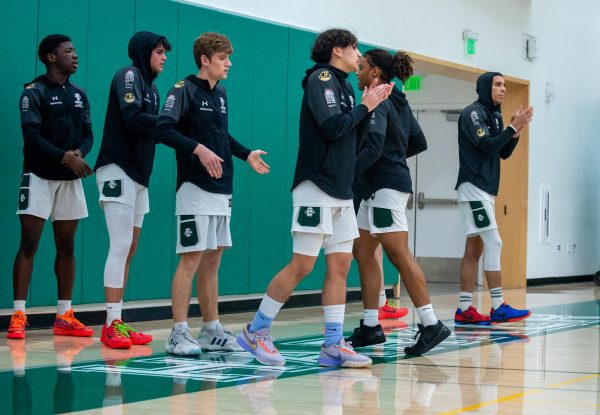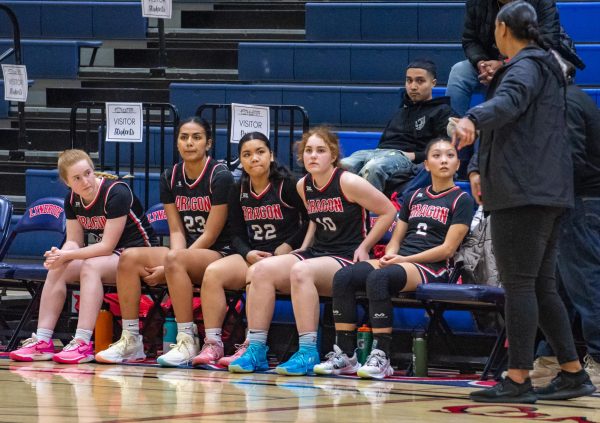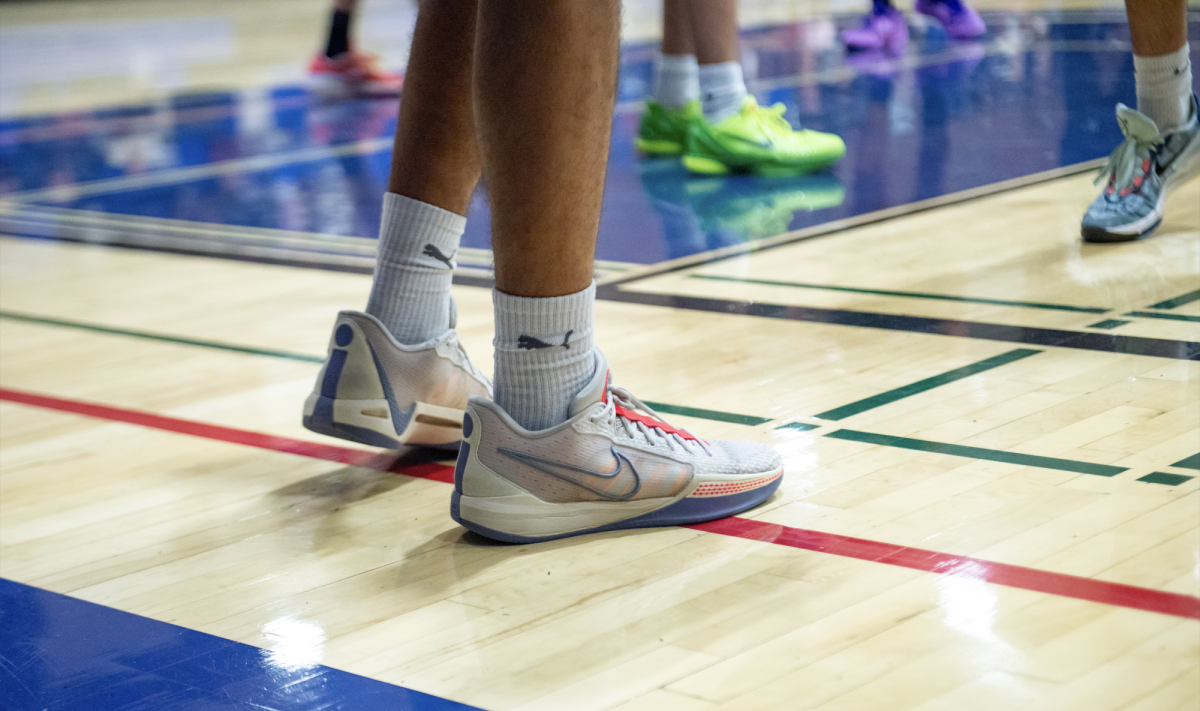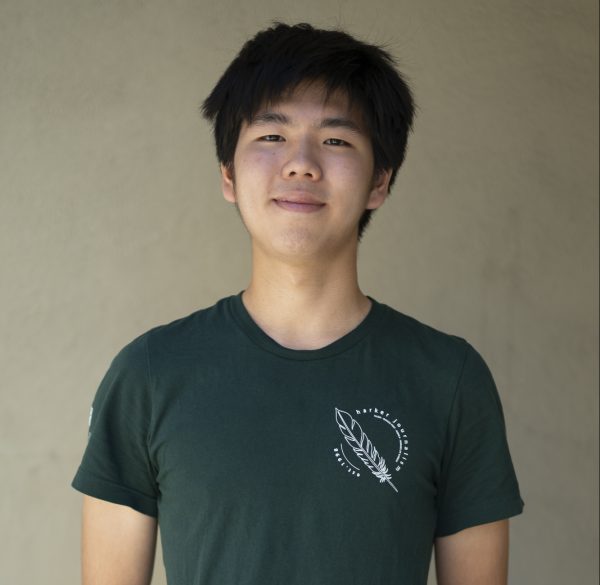
Wander into the back of a Nike store, and you’ll find yourself amidst a labyrinth of shelves filled to the brim with bright orange shoe boxes. Take one step into a Foot Locker, and you’ll see sneakers of all styles lining the walls in every direction you look. Whether a casual customer or an avid collector, anyone is bound to discover a pair of shoes that fits their style among the endless variety.
The emergence of modern American sneaker culture owes much of its rise to the growing popularity of basketball footwear since the late 1900s, propelled by the influence of celebrity athletes like Michael Jordan. Jordan’s groundbreaking partnership with Nike in 1984 revolutionized the perception of shoes and athletic endorsements, as their collaboration saw immediate success in their earliest releases of the Air Jordan sneaker line, an iconic collection still relevant and admired by many fans to this day. The Jordan Brand set the stage for future partnerships between NBA players and shoe companies, as virtually every star player in the league today has their own signature shoes.
Varsity boys basketball player Haden Andrews (11) finds that Lebron James’ and Kyrie Irving’s shoes suit him best. While aesthetics are one aspect to consider, Haden values a shoe’s performance capabilities above all.
“I look for style of course — I want ones that look nice, but comfortability and traction are the most important things for me because you want to be able to run easily, make quick movements, and support yourself,” Haden said. “I like breathability too, something that’s not too compact or stuffy.”

Varsity girls basketball player Finley Ho (9) echoes the prioritization of performance over style, listing her criteria for how she chooses her basketball shoes which includes functionality and affordability. While more modest designs of Giannis Antetokounmpo’s and Kyrie’s signature shoes appeal to her most, she suggests what bolder shoes may reveal about a wearer.
“I try to look for ones that have good ankle support, as I’m coming off an [ankle] injury right now, and some that are a decent price,” Finley said. “Then at that point, it’s hard to care about aesthetics. If I see someone wearing really flashy shoes like Lamelos, I think they’re willing to drop a lot of money into basketball so they’re probably pretty good players.”
Sneaker culture eventually expanded beyond the basketball world and into the mainstream fashion scene as a broader audience began embracing all the diverse styles. Finley circles back to the influence of Jordan shoes, which have extended their popularity and reputation as lifestyle sneakers, and how she adopted them in this sense too.
“My normal shoes are usually Jordans,” Finley said. “I had a friend in middle school who was really into Jordans and she would always be wearing different ones. I thought they looked really cool so I started looking into them.”
Once sneakers cemented themselves as prized commodities in the general markets, the hobby of shoe collecting gained traction. Economics teacher Dean Lizardo first encountered this fervor through Nike’s digital SNKRS app, where consumers purchase exclusive shoes available only for a limited time. Lizardo credits marketing tactics like artificial scarcity as main contributors to the popular demand for sneakers. He points to his Nike Air Max 90s and his J Balvin x Jordan 3s as some of his most cherished sneakers, which showcase infrared orange hues and a sunset gradient pattern.
“I like what a lot of people would consider uglier shoes, ones that have strange colors or are really bright,” Lizardo said. “I like older-type models, sort of chunky sneakers, that aren’t super sleek or slender.”
Some sneaker fanatics collect shoes simply for the sake of displaying them as decorative pieces or admiring their aesthetic qualities, but others may take on a business-driven approach to the hobby. However, Lizardo makes his purchases with the intention of keeping and wearing every shoe in his collection for their visual appeal and fashion.
“There’s an entire culture around acquiring mass amounts of shoes for the sole purpose of reselling them to make a quick buck,” Lizardo said. “You even have people who design bots that try to buy up shoes as quickly as possible so that they can put them on the resale markets. That’s cool and very entrepreneurial, and as an economics teacher I can’t really hate on that. But shoes are shoes at the end of the day. They’re meant to be worn in my opinion.”
Fashion continues holding significance in the realm of footwear, whether for general sneakers or basketball-specific shoes. With players donning identical team jerseys in organized games, shoes provide players with a way to distinguish themselves through footwear that is representative of themselves and their style.
“It’s a statement,” Haden said. “A person’s shoes can tell their personality or their character. Basketball can be a very stylish game, so you want to have style with what you’re wearing as well.”


















![“[Building nerf blasters] became this outlet of creativity for me that hasn't been matched by anything else. The process [of] making a build complete to your desire is such a painstakingly difficult process, but I've had to learn from [the skills needed from] soldering to proper painting. There's so many different options for everything, if you think about it, it exists. The best part is [that] if it doesn't exist, you can build it yourself," Ishaan Parate said.](https://harkeraquila.com/wp-content/uploads/2022/08/DSC_8149-900x604.jpg)




![“When I came into high school, I was ready to be a follower. But DECA was a game changer for me. It helped me overcome my fear of public speaking, and it's played such a major role in who I've become today. To be able to successfully lead a chapter of 150 students, an officer team and be one of the upperclassmen I once really admired is something I'm [really] proud of,” Anvitha Tummala ('21) said.](https://harkeraquila.com/wp-content/uploads/2021/07/Screen-Shot-2021-07-25-at-9.50.05-AM-900x594.png)







![“I think getting up in the morning and having a sense of purpose [is exciting]. I think without a certain amount of drive, life is kind of obsolete and mundane, and I think having that every single day is what makes each day unique and kind of makes life exciting,” Neymika Jain (12) said.](https://harkeraquila.com/wp-content/uploads/2017/06/Screen-Shot-2017-06-03-at-4.54.16-PM.png)








![“My slogan is ‘slow feet, don’t eat, and I’m hungry.’ You need to run fast to get where you are–you aren't going to get those championships if you aren't fast,” Angel Cervantes (12) said. “I want to do well in school on my tests and in track and win championships for my team. I live by that, [and] I can do that anywhere: in the classroom or on the field.”](https://harkeraquila.com/wp-content/uploads/2018/06/DSC5146-900x601.jpg)
![“[Volleyball has] taught me how to fall correctly, and another thing it taught is that you don’t have to be the best at something to be good at it. If you just hit the ball in a smart way, then it still scores points and you’re good at it. You could be a background player and still make a much bigger impact on the team than you would think,” Anya Gert (’20) said.](https://harkeraquila.com/wp-content/uploads/2020/06/AnnaGert_JinTuan_HoHPhotoEdited-600x900.jpeg)

![“I'm not nearly there yet, but [my confidence has] definitely been getting better since I was pretty shy and timid coming into Harker my freshman year. I know that there's a lot of people that are really confident in what they do, and I really admire them. Everyone's so driven and that has really pushed me to kind of try to find my own place in high school and be more confident,” Alyssa Huang (’20) said.](https://harkeraquila.com/wp-content/uploads/2020/06/AlyssaHuang_EmilyChen_HoHPhoto-900x749.jpeg)




